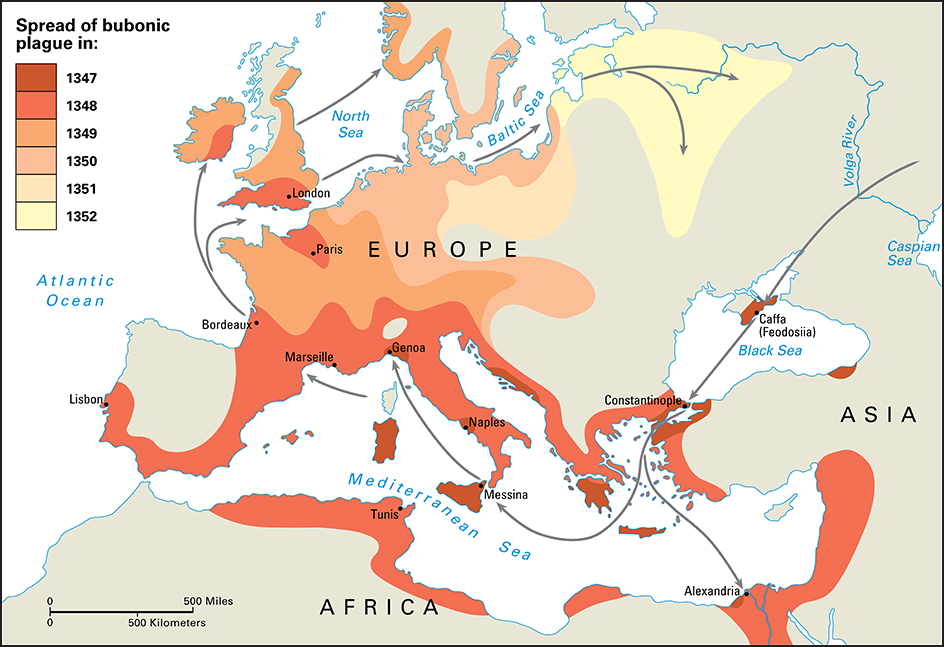Black Death was a deadly epidemic that spread across Asia and Europe beginning in the mid-1300’s. Medical historians have identified the cause of the Black Death as plague, an infectious disease caused by the bacterium Yersinia pestis. The Black Death was the second pandemic (extremely widespread occurrence) of plague in history. The first pandemic began in the mid-500’s A.D. in the Byzantine Empire and spread across Europe. By about 1400, the Black Death had killed up to 40 percent of the population of Europe—around 25 million people.
Historians have long thought the Black Death originated as an outbreak of plague in central Asia. Some historians think the outbreak may instead have begun in western Asia or eastern Europe. Records indicate that the disease reached the Black Sea port of Caffa (now Feodosiia, Ukraine) by 1347. It then spread swiftly along seafaring and overland trade routes to western Asia, North Africa, and southern Europe. In 1347, the plague struck Messina, Sicily. Soon, cities surrounding the Mediterranean Sea experienced outbreaks with enormous death tolls. The disease spread farther into Europe, striking London in 1348 and Scandinavia and Russia soon after. Over the following centuries, repeated outbreaks struck throughout Europe.

Physicians at the time did not know the cause of the disease. They could not prevent its spread and had no effective treatments for those who suffered from it. Many people mistakenly believed it was caused by breathing foul air. The huge number of deaths caused panic, and many people tried desperate measures to save themselves. In Spain, France, and what is now Germany, people accused local Jewish communities of poisoning wells to spread the disease. Thousands of Jews were killed in resulting massacres. Many people believed the plague was punishment from God. In some regions, people whipped themselves in grotesque public processions in an attempt to appease God’s anger.
The Black Death transformed European society. Consumers and skilled workers died by the thousands in cities, devastating some local economies. Labor shortages caused by high death tolls led to increased wages, attracting many peasants to the cities. Some rural villages simply disappeared. To control the spread of the disease, some European governments enacted important public health measures, such as quarantines. Eventually, many areas established public hospitals and permanent boards to help protect public health.
Some scholars have also noted the cultural effects of the Black Death in the art of the early Renaissance. Mortality and individualism appear as common themes in the art and literature of the period, a reaction to the lonely and unpredictable death associated with the disease.
